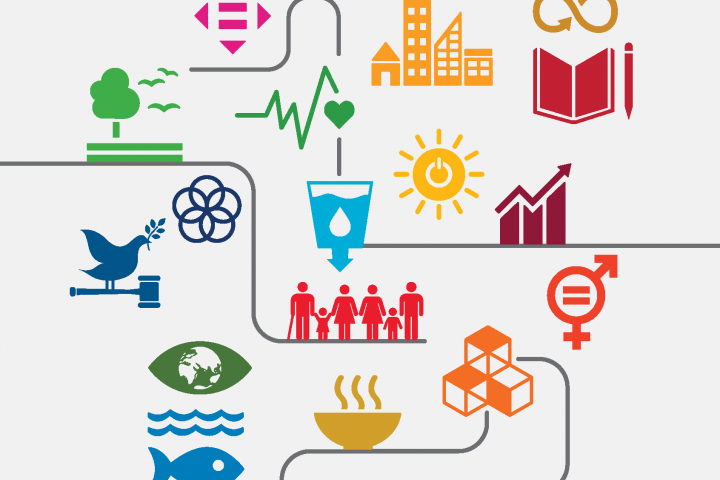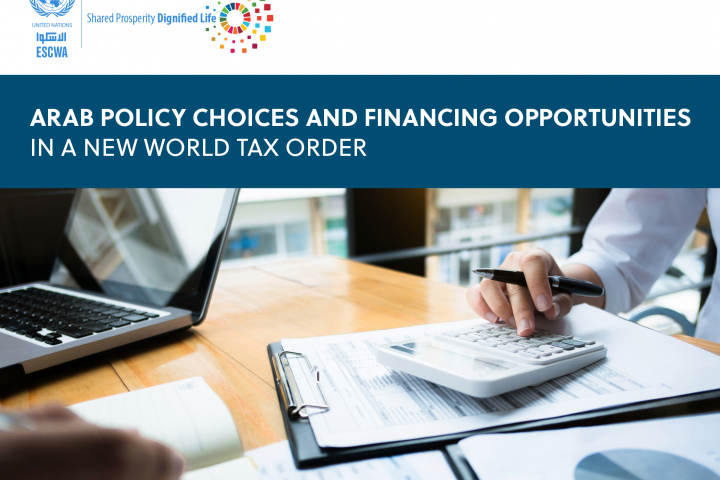Beirut, 21 January 2016 (Communication and Information Unit)--Military conflicts and the slump in oil prices, combined with a world economy that stumbled in 2015, are holding back economic growth in Western Asia according to the United Nations World Economic Situation and Prospects 2016 report that was released today.
Average Gross Domestic Product (GDP) growth in Western Asia slowed to 2.0 per cent in 2015. A modest acceleration to 2.4 per cent is expected in 2016, but economic activity in the region will remain very weak compared to average growth over the past 15 years. In 2017, oil-exporting economies are expected to benefit from a moderate recovery in oil prices, leading to regional GDP growth of 3.0 per cent.
Inflationary pressures have eased in most countries, in line with the global decline in commodity prices. While inflation has been contained in Iraq, despite the armed conflict, hyperinflation continued in the Syrian Arab Republic in 2015 as a direct consequence of the current foreign-exchange constraints. Yemen also saw high inflationary pressures as the armed conflict intensified, with the inflation rate estimated at 22 per cent in 2015.
Unemployment remains high in Western Asia
Western Asia will continue to register some of the highest unemployment rates among developing countries. Unemployment figures are not expected to improve, as extremely high structural unemployment, particularly among youth, and several armed conflicts will require longer-term solutions.
In Turkey, the biggest economy in the region, GDP growth was estimated to have slowed to 2.8 per cent in 2015, and the same rate is projected for 2016. Between January and September 2015, the Turkish lira lost more than 25 per cent against the dollar. To contain the inflationary pressures, monetary policy in Turkey is expected to tighten further in the next two years. However, low oil prices have alleviated some balance-of-payment and fiscal constraints in Turkey, as well as in other non-oil-exporting countries, such as Jordan and Lebanon.
Economic prospects in Jordan and Lebanon are expected to improve in the forecast period, although they remain constrained by the conflict in the Syrian Arab Republic. Both countries benefit from remittances sent by national emigrants working in the non-oil sectors in countries of the Cooperation Council for the Arab States of the Gulf (GCC).
In Israel, the economic growth estimate for 2015 has been revised down to 2.3 per cent, reflecting a decline in export volumes, while private demand has been held back by the recent surge in violence.
Sovereign wealth funds in Qatar and Saudi Arabia act as fiscal buffers
Given the low oil prices, growth prospects in oil-exporting countries will rely more heavily on non-oil economic activities. In Qatar and Saudi Arabia, where financial reserves are sufficiently large, fiscal spending on infrastructure projects continued to support GDP growth in 2015, and will do so, to a lesser extent, in 2016. Saudi Arabia has sufficient buffers to cover approximately 5.3 years of the projected 2015 fiscal deficit. However, fiscal consolidation is expected in many other countries in the region next year.
In oil-exporting countries, fiscal revenues have plummeted as oil prices have dropped. This limits the scope for countercyclical fiscal measures in the face of slowing global demand, and has led to a process of fiscal readjustment, spending cuts and reforms of subsidy policies. Both Bahrain and Oman have reduced subsidies on certain food products. There is also scope for cutting fuel subsidies in many countries. The average fossil-fuel subsidy rates in the oil-exporting countries in the region are among the highest in the world, ranging from 53.3 per cent in Iraq to 78.5 per cent in Qatar. However, tackling subsidies can be politically challenging. In 2014, Yemen undertook reforms to cut fuel subsidies, only to be reversed months later owing to a spike in social unrests.
Revenue prospects remain generally weak for both oil-exporting and more diversified economies. For some countries, such as Jordan and Yemen, direct and indirect external assistance has become essential to maintaining their capital spending levels.
Conflict and humanitarian crises in Iraq, the Syrian Arab Republic and Yemen
Geopolitical turmoil, armed conflict and humanitarian crises remain a heavy burden for the economies of Iraq, the Syrian Arab Republic and Yemen. In particular, Iraq and the Syrian Arab Republic are engulfed in conflicts that have led to substantial destruction of their economic structures. The consequences on public finances through increased spending, foreign direct investments and tourism are being felt across the region. The high cost of the conflicts has resulted in a large numbers of refugees fleeing to Europe.
Key downside risks in Western Asia include an expansion of conflicts beyond Iraq, the Syrian Arab Republic and Yemen; lower external demand for oil, which could result from a more pronounced economic slowdown in China; and higher capital outflows and interest rates associated with monetary tightening in the United States.
****
About the report: The World Economic Situation and Prospects report is produced annually by the UN Department of Economic and Social Affairs (UN/DESA), the UN Conference on Trade and Development (UNCTAD), the five UN regional commissions and the World Tourism Organisation (UNWTO). The report is available from http://bit.ly/WESP.
Media contacts:
Francyne Harrigan, UN Department of Public Information, harriganf@un.org
Sok-Min Seo, UN Department of Public Information, seo1@un.org, +1 212 963 1841
For more information, find ESCWA news on:
Website: www.unescwa.org Facebook: www.facebook.com/unescwa Titter: @ESCWACIU



